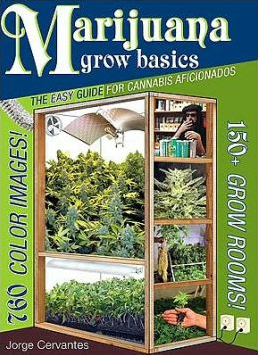
by Jorge Cervantes
LED Lamps
LED (light-emitting diode) lamps could be the future of indoor plant lighting. These inherently efficient lamps use solid state lighting to illuminate rather than filaments used by incandescent and tungsten halogen bulbs, or gas which is used in HID, fluorescent, and compact fluorescent bulbs. LED lamps consume a fraction of the electricity of HID and fluorescent / CFL lamps and generate very little heat. LED fixtures are rated for regular household current – 120V and 240V. LED light output continues to increase with improved materials and technological advances while maintaining efficiency and reliability associated with solid state equipment. Do not be fooled by old LED lamps that are not as bright as new models. Do not purchase LED lamps with a rating lower than 1 watt per bulb.
Wattages available: LED lamps are rated in milliwatts (mW) and consume much less electricity than fluorescent, CFL, and HID lamps to generate much more light. Currently the most common LEDs used for plant growth consume 1 watt per bulb. Typically clusters of 80-100 bulbs consuming 80-100 watts respectively are placed in a single fixture.
Brilliance: Directional LEDs ensure that all the light produced is pointed downward so that no light fragments off to the side. LEDs from Philips Lumileds Company produce 115 lumens per watt.
Spectrum: The color sprectrum of each bulb is dictated by the semiconducting material composition and condition. The spectrum can range from infrared to ultraviolet and many colors in between. The new LED “grow” lamps combine blue and red bulbs to form the exact spectrum necessary for cannabis growth.
Life of fixture: LED fixtures have a 100-percent-efficient life expectancy of 30,000 hours – about 6 years when operated 12 hours a day, and 3 years when operated 24 hours a day. Beyond 30,000 hours, brilliance fades approximately 30 percent during the following 20,000 hours.
Ballast: Similar to a ballast the power supply that drives LEDs precisely regulates the flow of electricity in milliwatts to the lamps. The solid state low-wattage device generates very little heat because the flow is not impaired. Several fixtures available today include a fan to dissipate heat quickly and efficiently.

